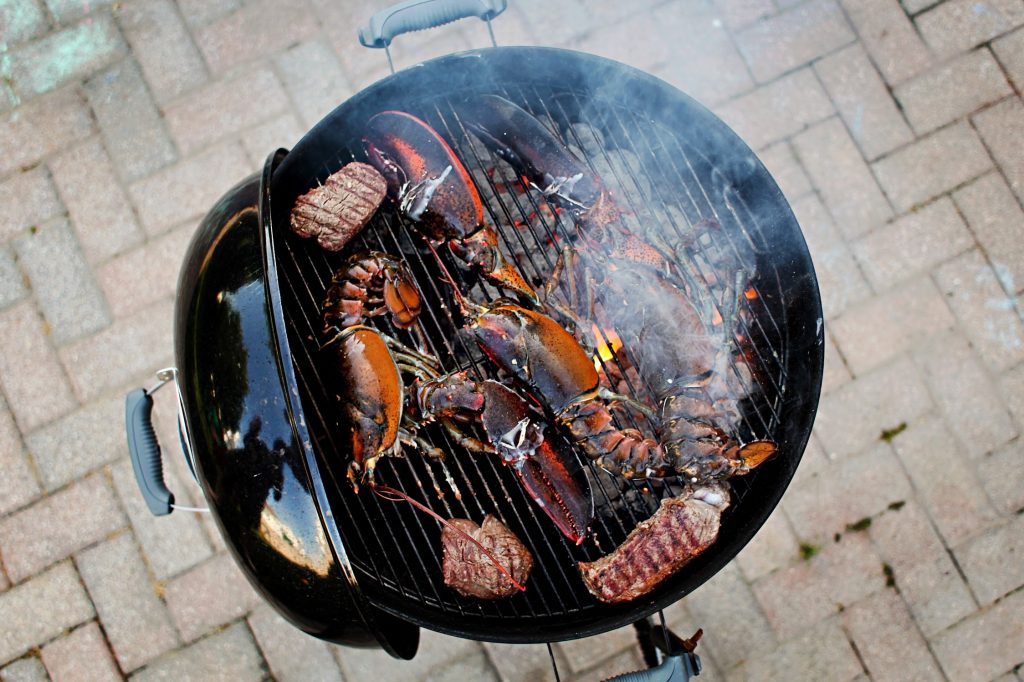Cooking Lobster: Wet Heat vs. Dry Heat
There's more than one way to cook a lobster. Wet Heat cooking refers to boiling or steaming a lobster - it's the most common and traditional way to cook a lobster, and the best choice when you want to serve a whole lobster. Boiling cooks lobsters a little quicker, and the meat is easier to remove from the shell than when steamed. If your recipe calls for fully cooked or picked lobster meat, you should boil for best results.
Dry Heat cooking refers to baking, broiling, roasting, or grilling the lobster. It requires a little more skill and attention to make sure it's cooked right, but results in a distinct taste and flavor depending on what method is used.
Wet Heat Cooking Directions:
1. Choose a pot large enough to hold all of the lobsters comfortably; do not crowd them. A 4- to 5- gallon
pot can handle 6 to 8 pounds of lobster.
2. Fill with water, allowing 3 quarts of water per 1-1/2 pounds of lobster.
3. Add 1/4-cup sea salt for each gallon of water.
4. Bring the water to a rolling boil.
5. Add the live lobsters one at a time, and start timing immediately. Do not cover.
6. Stir the lobsters halfway through cooking.
7. Let the lobsters rest for 5 minutes or so after cooking to allow the meat to absorb some of the moisture in the shell.
Dry Heat Cooking Directions (Grilling):

1. Cut the body in two, right down the middle, from antenna to tail, exposing two equal halves of the meat. Crack the claws (not wide open), but simply break the shell enough to allow the flames to do their magic on the grill.
2. Make a simple marinade and apply it liberally to the exposed tail-halves. Dip the cracked claws into the marinade for a few minutes as well (you can use lemon juice, olive oil, salt, and black pepper for a quick marinade).
3. Stretch the body and tail-halves over the hot flames, making sure the knuckles and claws are more at the edge of the fire where the heat is lower.
4. After a minute or so, slather more marinade on the exposed tail-halves and turn the split body over, so the split-tail meat is directly over the flames. Cook for about three minutes.
5. Turn the split bodies back. Touch the exposed tail meat with your finger—it should be soft and giving. When the meat starts to get firm, immediately remove it from the fire.
No matter how you or your guests like your lobster and whichever way you choose to cook it, it’s going to result in a delicious experience. Juiciness abounds with wet heat cooking, and a classic taste topped off with lemon and clarified butter. With dry heat cooking, the flame infuses the lobster meat with a magic, savory flavor that can't be beat.